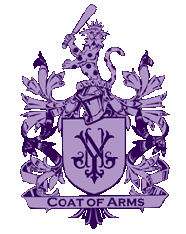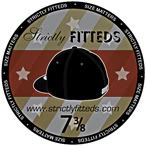Jesse Leyva makes retro sneaker lovers’ dreams come true.
As global design director for Nike’s SportCulture division, Leyva was one of the designers responsible for this summer’s Vintage Running release, where iconic styles from 1972 to 1977 — the LD-1000, the Daybreak, the Oregon Waffle, the Nylon Cortez and the Waffle Racer — were remastered and reformatted for retro-loving fashionplates and nostalgic runners. (The collection has one more trick up its sleeve: the 1976 Elite style, which hits the market Oct. 1.) Even though Nike is known more for pushing the tech envelope than looking backward, according to Leyva, reissuing styles is a no-brainer.
“Consumers really do love product, and they love it after it’s worn in,” Leyva said. “And if we can give that consumer that shoe again, we’ll find a way to win.”
A member of Team Swoosh for 10 years, Leyva worked on cross-training styles and special makeups for the Portland, Ore.-based athletic giant before joining his current group five years ago. Here, Leyva talks about making old look new, why Nike loves Japan and what it’s like working with your idol.
1. What made you think that, in a time when running shoes are so technical, a vintage sneaker had a chance?
JL: We get product all the time from consumers who are in love with a running shoe. They’ll send it to us, and it literally has hundreds and hundreds of miles on it, it’s completely torn up, and their stories are in the box. So when we started asking if this is a good idea, we looked at all of those things, and all of the pluses made us think we should do this. Consumers really do love product, and they love it after it’s worn out. If we can give that consumer that shoe again, we’ll find a way to win. We’d been talking about these older product styles at Nike, especially in our division, for quite a while, mainly because of our fascination with the Tokyo market.
2. Tokyo? Really?
JL: [Fever for] vintage product in Tokyo is like in no other place in the world. At Nike, believe it or not, we don’t have every shoe we’ve ever made, so when we’re in Tokyo, one of our fun things to do is to look and see if we can find some old product that we don’t have.
3. What’s the biggest challenge in remaking an existing shoe?
JL: To make sure we stay true to the shoe and stay true to the insights behind the shoe. For a lot of these reissued products, the original designers still work at Nike. So when we bring something back, we consult with the original designer and original developers, and figure out what they were doing back in the day. A lot of times, when we go through those discussions with the original designer, he or she will have ideas that, back in 1977, we couldn’t execute — but today we can.
4. What else does the SportCulture division do?
JL: Eighty percent of my job is to bring new life to products from the past, so we work on a lot of heritage product and really put new cultural comments on those products. The other piece is trying to bring some innovation into different types of things. We do a lot of hybrid products, so some of the more exciting product I’ve worked on included a collaboration with [legendary Nike designer] Tinker Hatfield, who, in the sneaker industry, is the reason we all have jobs.
5. How did it feel to collaborate with a shoe industry icon?
JL: Working with [Tinker] was pretty cool — it was one of my goals when I first started at Nike. And the project we worked on was almost the opposite of vintage. We looked at one of his shoes, the Trainer 1, and figured out how we could restore the shoe to make it better, as opposed to just bringing it back the way it was back in the day. That was an interesting exercise. I guess it’s still kind of the sneaker geek in me. To be able to work with Tinker, even though I now consider him a friend, is still pretty crazy.
6. So which style is your favorite?
JL: The LD-1000.
7. Why is that?
JL: It was a shoe I’ve always wanted to bring back. And what’s really cool about the shoe is that there are so many things that are almost ... so bad that it makes it good. The LD-1000 was one of Nike’s really early attempts to play in the stability running market. Back when the shoe was originally designed, it had an extremely wide base, to the point where it was almost like a concept car we put into the marketplace. We wouldn’t do that again today. But when we were talking about bringing the shoe back, we thought, “We have to keep it extremely wide on the outsole so it has that 1970s, geeky look to it.”
8. Who is the audience for these shoes?
JL: The great thing about the product is it’s going to touch a lot of different people. You’re going to get people who are performance runners who remember some of these shoes they used to train in when they were younger. Then you’re also going to get a newer generation who has wanted to wear those shoes, but they’ve just been out of circulation.
9. But serious runners aren’t going to pick them up to train in, are they?
JL: No. I definitely think they’re going to want the shoes from more of a heritage standpoint. You still could run in the shoes, but comparing them with, say, our Bowerman line — well, there’s no comparison. Your serious runner isn’t going to run in those shoes. They’ll just wear them around and make a statement.
10. Should we expect more historic reissues from Nike?
JL: We’re not going to walk away from vintage. The whole idea behind that concept has a lot of legs. There are definitely some new areas we can go into.



















No comments:
Post a Comment